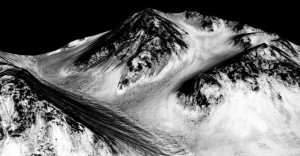
By Kyle Waterman
Oct. 15, Volume 47 Issue 1
NASA’s latest discovery has confirmed that water flows on the surface of Mars.
Images shown from Nasa’s Mars Reconnaissance Orbiter (MRO) indicate that hydrated minerals have been found on the surface of this planet. This new discovery gives NASA an opportunity to further explore Mars.
“We’ve known for about 15 years there was water on Mars,” said Michelle Moore, an astronomy instructor at SFCC, “this new finding made it proof positive.”
These hydrated salts and perchlorates found on the surface are just some of the proof that was shown and found on the surface of this planet.
“You can’t get hydrated salts without water, and the perchlorates lower the water’s freezing temperature,” said John Whitmer, an astronomy instructor at SFCC, “but it’s nothing like lakes or flowing rivers, it’s very seasonal and temperature driven.”
According to NASA’s announcement it explains that water only flows onto the surface during certain seasons and temperatures.
“When most people talk about water on Mars, they’re usually talking about ancient water or frozen water” said Lujendra Ojha of the Georgia Institute of Technology who spoke on NASA’s report, “Now we know there’s more to the story.”
“As scientists we are craving the next big scientific step” Moore said
From this discovery NASA has been talking about getting funding to start the next step; humans going to mars. But they are facing difficulties with the cost of space adventure
“About one gallon of water costs about $10,000 just to get to the international space station,” Whitmer said.
Since the flow of water is seasonal, scientist’s next step is to figure out where it goes.
“There must be some underground water table in the planet” Whitmer said, “still i don’t think the answer is to colonize Mars.”
Water is a key element to sustaining life and finding on another planet brings up more questions to be answered.
“This gives the chance for Mars to have life,” Whitmer said, “we get pretty excited.”
NASA has already devised a plan for their journey to Mars, and has shown it to the public earlier this year. Their plan is to reach Mars in about 15 years.
“NASA is developing the capabilities needed to send humans to an asteroid by 2025 and Mars in the 2030s,” said by Nasa’s Journey to Mars announcement.
